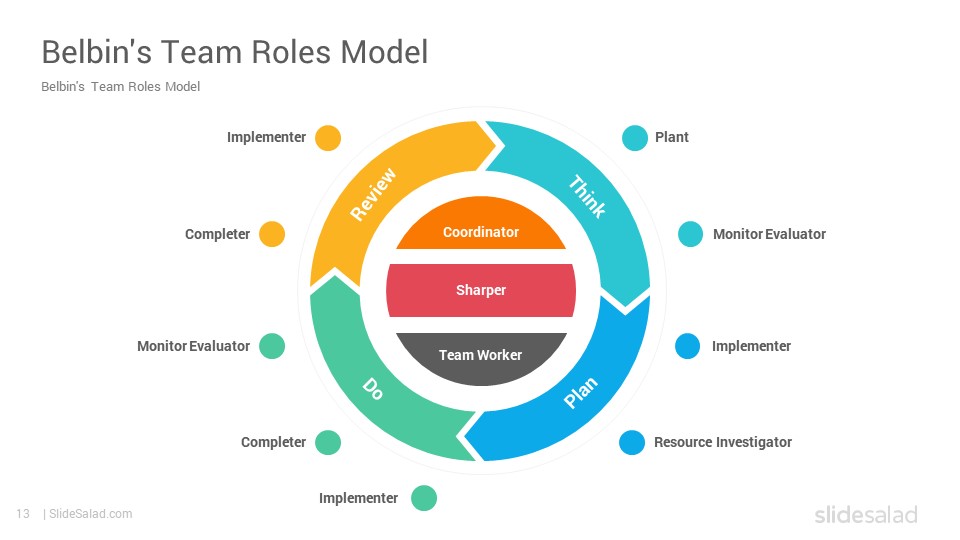
The Action or Task Roles: Shaper, Implementer, Completer-Finisherīelow you can read about each category, and each role within that category! According to Belbin, each role has its strength and what are called ‘allowable weaknesses’.The Thinking Roles: Plant, Monitor Evaluator, Specialist.The Social Roles: Resource Investigator, Teamworker, Co-ordinator.

There are nine of Belbin’s team roles, split into three broader categories: Belbin’s team roles allow individuals to recognise their strengths and weaknesses, and feel as though they are important within an overall task. Look at the task in hand and then work out what the tasks are, and which team role needs to be fulfilled. We don’t always need all of Belbin’s team roles at all times. These behaviours could be grouped into a set number of related clusters to which the term ‘Team Role’ is applied.” – Meredith Belbin But the range of useful behaviours, which make an effective contribution to team performance, is finite. “The types of behaviour in which people engage are infinite. Some people may fill two roles, and of course these roles can overlap somewhat.

Generally, successful teams will be made up of people who provide different skills and have different mindsets, attitudes and behaviours. What are Belbin’s team roles?īelbin’s team roles are 9 different roles that people would fit in within a team. This model has since informed managers and employers around the world and continues to be a very popular guide for management teams. In this book he proposed that an effective team has members that cover eight (later nine) key roles in managing the team and how it carries out its work. In 1981 Belbin published his book entitled Management Teams, which demonstrated how members of teams interact. Born in 1926, Belbin is a visiting professor and Honorary Fellow of Henley Management College in Oxfordshire, UK. Raymond Meredith Belbin is an English researcher and management consultant who is best known for his work on teamwork and management.



 0 kommentar(er)
0 kommentar(er)
